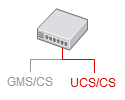Messaging, Modes, and Migration

|
Purpose: More on the basic operation of UCS |
Messaging
Clients connect to UCS and send requests, to which UCS responds. Clients communicate with UCS via RESTful web services, using HTTP request methods that are based on the GET, POST, PUT, and DELETE methods. Clients of UCS/CS may include Orchestration Server, Genesys Voice Portal (GVP), agent desktops, or any third party application that makes use of real-time customer service information.
Modes
UCS has two modes of operation. Each message can be sent in only one mode.
- Production—The normal operating mode. UCS accepts incoming requests for querying/updating customer profiles and service-related data.
- Maintenance—For configuring the database and other operations; normally to be used only at times of low traffic. Use this mode to create extensions to the customer profile model, or to define identification keys. While in maintenance mode, the system does not process incoming requests for querying or updating customer profiles or service history.
Migration and Transition
For migration from versions 7.0 through 8.0.0 of UCS, see the Genesys Migration Guide. For versions previous to 7.0, there is no complete migration, but you can convert most of the UCS (then called Contact Server) database. The procedure is described in the "Transitioning to eServices from ICS 6.x" chapter in the eServices 8.0 User’s Guide.
